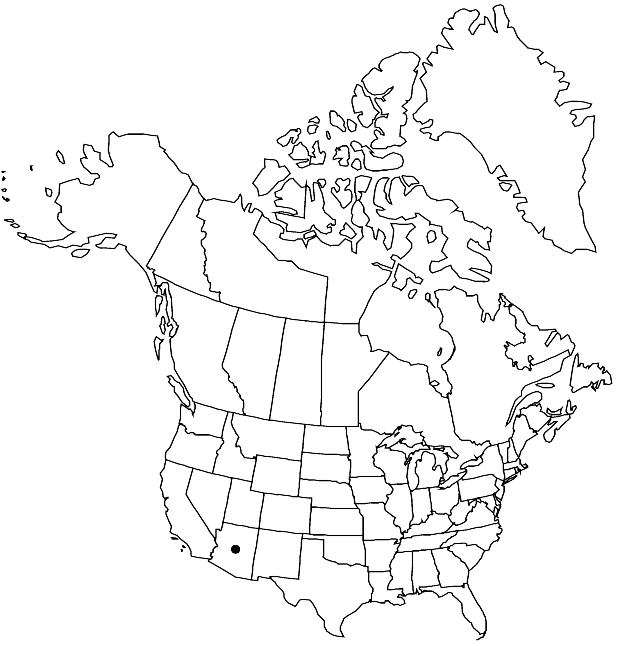Dimorphocarpa pinnatifida
Publ. Bussey Inst. Harvard Univ. 1979: 28. 1979.
Annuals. Stems branched basally and distally, 2–9 dm. Basal leaves: petiole 0.5–2 cm; blade linear to linear-lanceolate, (2–)3–6(–8) cm × (2–)3–5(–8) mm, base attenuate, margins pinnatifid. Cauline leaves (distal) shortly petiolate or subsessile; blade linear to narrowly lanceolate, base cuneate, margins pinnately lobed. Fruiting pedicels divaricate to slightly reflexed, (8–)10–17(–22) mm, (straight). Flowers: sepals 2–3 × 1–1.5 mm, pubescent abaxially; petals white, (3.5–)4–6.5 × 2–3.5 mm, attenuate to claw, claw 1–1.5 mm, expanded basally; filaments white, 2–3 mm; anthers 0.8–1.1 mm. Fruits: each valve orbicular, 5–6.5 × 6–7 mm (nearly as long as wide), base and apex rounded, not margined beyond indurated part surrounding seeds, pubescent; style 0.5–1 mm. Seeds suborbicular, 2.5–3.5 × 2–3 mm. 2n = 18.
Phenology: Flowering Mar–Apr.
Habitat: Sandy hills and flats
Elevation: 100-800 m
Distribution

Ariz., Mexico (Sonora).
Discussion
Dimorphocarpa pinnatifida is known from Pima and Yuma counties.
Selected References
None.